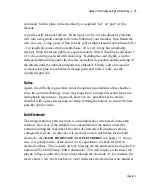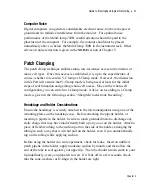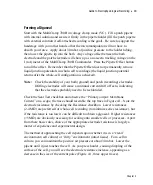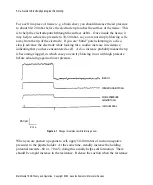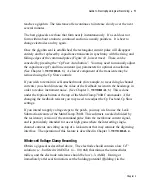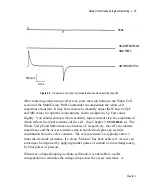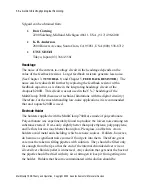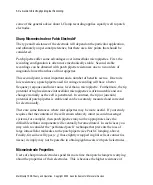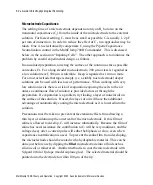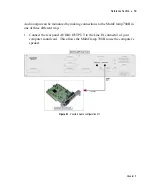
Guide to Electrophysiological Recording
•
59
disassembled and sonicated in ethanol or pure deionized water, and allowed to
dry thoroughly before being used again. It is also a good idea to periodically
clean the holders by sonication even if no fluid has been observed in them.
Seal
The seal will usually be the dominant noise source if it is only a few gigohms.
Seal resistances in excess of 20 G
Ω
must be obtained if exceptionally low noise
single-channel recordings are to be routinely achieved. The noise depends also
on the depth of the pipette tip below the surface of the bathing solution since
the effective pipette capacitance increases as the depth of immersion increases.
The voltage noise of the headstage interacts with the pipette capacitance to
produce a noise source that rises with frequency. In order to minimize noise
when recording from excised membrane patches, the electrode tip should be
lifted until it is just under the surface of the bathing solution.
Signal Generator
One last potential noise source to consider is the noise in the signal generator
that provides the command. In the MultiClamp 700B we have succeeded in
minimizing this noise by heavily attenuating the external command. However,
it is possible for this noise source to be significant, particularly if the command
signal comes from a D/A converter.
Sharp Microelectrode Recording
The CV-7 headstage of the MultiClamp 700B contains both an Axopatch-like
current-to-voltage converter and an Axoclamp-like voltage follower circuit. The
former is activated when VC (V-Clamp) mode is selected in the MultiClamp 700B
Commander, the latter when I=0 or IC (I-Clamp) mode is selected. Although the
I-Clamp circuit is designed to be used with high-resistance sharp microelectrodes, it
can also be used with lower-resistance patch electrodes, which in some cases offer
advantages. (See next paragraph.) In this chapter it will be assumed for the most
part that sharp microelectrodes are being used for the I-Clamp recording. However,
Chapter 4

